Radio

Radio is two projects that grew out of experimentation with two pairs of Philips radio baby monitors.
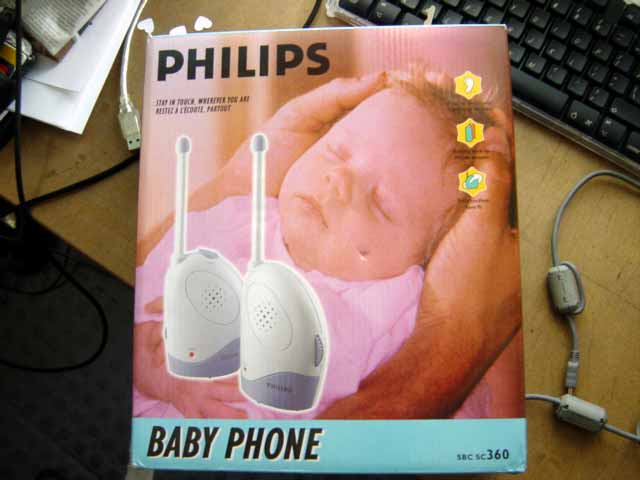
Please see the video below for an explanation of the life of the project and details of experimentation with both offshoots.
To start the project I simply placed the transmitter in the Interaction Design Studio and went for a walk around college with the receiver. I found that the receiver was picking up interference to varying degrees as I placed it near several sculptures in the gallery space and also in several sites around the exterior of the college.
With this initial experimentation over with, I started to think about how this interference could be put to use. Hide and Valid are the two projects that emerged.
After being engaged with trying to find the source of a major piece of interference, I decided that the area was worth investigating.
Prototype
After deciding to investigate the locating of interference,
and bearing in mind the themes described below, I decided to try to make
a game of the phenomenon I had observed. The first to spring to mind was
Hide and Seek.
After experimenting with miniature FM transmitters and receivers, I returned
to the existing technology I used for my first experiments, Baby Monitors.
With the addition of directional antennas, I was ready to start playing.
Themes
Games and Play
Over the life of the project and previously I have become more and more interested in how people play, and how work is different from play.
A person involved in this area is Pat Kane. Discusssing work and modern society, Kane states that:
“The trivialisation of play was the work ethic's most lasting, and most regrettable achievement. This is 'play' as the great philosophers understood it: the experience of being an active, creative and fully autonomous person. The play ethic is about having the confidence to be spontaneous, creative and empathetic across every area of you life - in relationships, in the community, in your cultural life, as well as paid employment. It's about placing yourself, your passions and enthusiasms at the centre of your world."
Kane also goes on to cite Sutton-Smith’s biological definition of the function of play:
“the reinforcement of the organism's variability"
So Play, whether physical, social or mental (or a combination) is a fundamental part of our biological survival, not just something to be put away with other childish things.
While Hide is a fairly explicit game by Kane's definition I do believe that it is relevant. It doesn’t take to much of a stretch of the imagination to think about an adaptation of Hide that could be used for doing surveys, or in order to foster community relations. The key to the Play ethic and the surrounding work is to break yourself from the “I put in the hours, therefore I am” mentality that purveyed the 18th, 19th and 20th centuries.
Street Culture and its interaction with technology
"The street finds its own use for things" - William Gibson
A major part of this project, and the main motivation for my initial experiments with baby monitors was trying to think about using existing technology for new uses, instead of trying to utilise the bleeding edge exclusively. Tampering with technology, or using things in different ways to those originally intended by their inventors has always played a major part in the evolution of technology.
As part of his work trying to find new methodologies for software development, Cory Doctorow has identified several “mainstream” technologies or products which have benefited greatly from tampering from external sources, or the market as a whole:
- The telephone, invented to broadcast opera into America's living-rooms.
- Krazy-Glue, invented as a field suture.
- The Web, invented to help high-energy physicists exchange research papers.
I have also identified several interesting cases of more street based inventions:
- Heroin addicts in Glasgow utilising McDonalds plastic tea spoons as accurate dose measures.
- LA school boys using disposable cameras as stun guns.
- Shop lifters lining the insides of their backpacks or pockets with aluminium foil.
In his work Doctorow proposes a new measure for the success of a product:
“the measure of a product's success is how far it diverges from its creator's intentions”
Doctorow goes on to argue that while it may be impossible to anticipate how a product could be (mis)used, it is up to governments, and other NGOs to ensure that restrictive laws or practices are not introduced which could deny “the innate human desire to tamper..and play”.
Future
There are two areas of Hide which I would like to explore further:
- The actual mechanics of Hide.
How the game evolves “in the wild”, with players playing in very much larger groups, over larger areas, how the players organise games and how, if and why any social aspects emerge from the game. - If Hide was a product - how would it be introduced
into the market, or wider society?
I am not interested in placing Hide into discrete packages, or using "conventional” product design or marketing to inject itself into the public conciousness, rather exploring ways in which the idea could lend itself to customisation and evolution. What about when you went to buy Hide, you received a list of products to customise, assembly guidelines and a list of local players instead of the usual finished “product”?
Inspiration
Valid was one of the two projects to come out of my initial
experiments with Baby monitors. (Please see video).
After noticing that certain objects were more interesting than others
in terms of the interference they caused, I wanted to investigate how
this phenomenon could be interpreted or utilised.
Themes
Crititism, opinion and trends
As an undergraduate, I completed a BSc in Mathematics and Computer Science. As such, concepts such as opinion, taste and trends were quite a shock to me in my first year at the RCA. This project could be viewed as a way for me to absolve myself, or the user of the responsibility of opinion. Perhaps in the future, people won’t have time for an opinion, and will rely on devices like these, to inform them of their tastes. Could a device such a Valid be viewed as a kind of Artificial Intelligence? In a society where opinion is valued so highly, where could these devices end up?
Location and locality
Valid works by measuring how the object being observed effects the electromagnetic field surrounding it. Location is all important, indeed in one setting a high score could be recorded, in another the score could be completely different. Parallels can be drawn between Valid and the art of Feng Shui, with the position, orientation and interaction between objects and spaces being of critical importance.
Prototype
From the initial sketch below, I decided to make a prototype, which can be seen below.
Several aspects emerged from the prototype:
- The need for a more explicit way of indicating the thing the user wanted to observe.
- The idea of proboscis-like detectors, which is investigated further in the DIY concept.
- The usefulness of being able to adjust the sensitivity of the device.
- The need for further refinement of the data collection and display methods.

4 Designs:
D.I.Y.
This idea came out of my feeling that Valid should not be a product at all, rather a device that should be manufactured and customised by the user themselves. In this way the user would be forced to understand every aspect of the device before being able to use it, and perhaps learn something about themselves in the process.This would probably be too much of a challenge in terms of time for the average user, so I also offer an option that allows for customisation, but with the majority of the menial manufacture already completed.
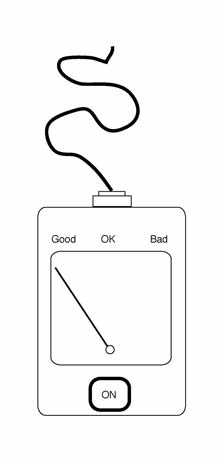
Cesta
The inspiration for this idea came from my fascination with the game of Pelota and trying to turn the interface of the DIY concept on its head.
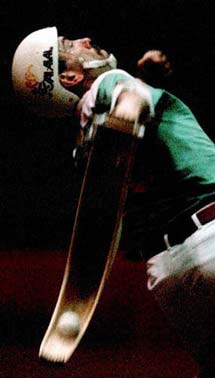
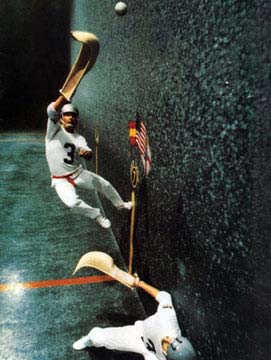
I started to think of Valid as like an impatient child, dragging the user around an environment, pulling the hand of the user when something is interesting, pushing away when boring.
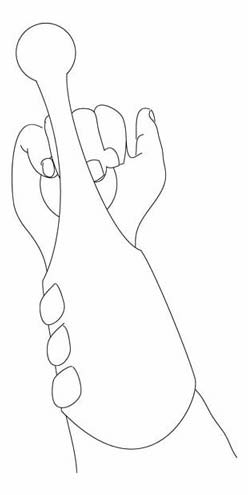
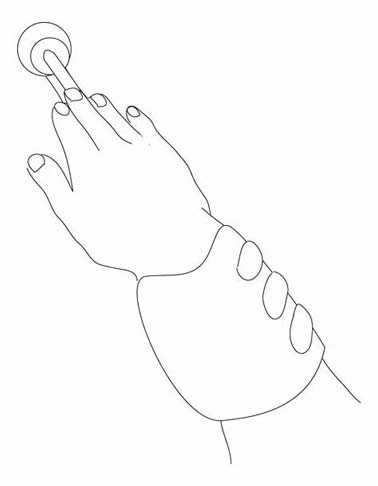
In order to simulate the analogue effects of a human hand grasping the user’s I propose the use of a strip of artificial muscle to grasp.
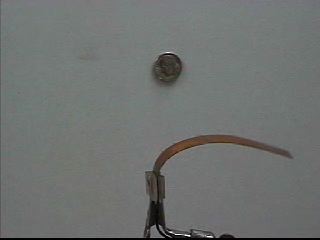
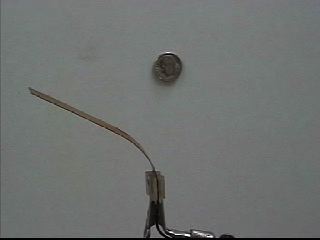
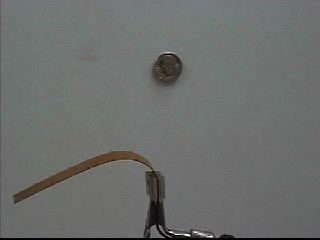
Ring
The idea for the Ring concept came out of trying to think
about how I could make Valid an invisible thing, without losing interesting
aspects of how the user would interact with the device.
Another feature of this design is that the user can still use the natural
pointing gesture for indicating what they would like to get an opinion
on.
When a user points at something and touches the ring with their thumb
in the natural way, the ring tightens or loosens depending on the quality
of the object. A similar material to the artificial muscle described in
the Cesta Design could be utilised to good effect.
Shades
The Shades concept emerged from thinking how someone
could take Valid to an extreme - and become totally obsessed with the
opinions being offered.
When the user looks at an object which is good, the glasses remain clear,
allowing the user the full visual experience of the object.
However, when the object is bad, the glasses turn totally opaque, denying
the very existence of the bad object.
Future
I would like to further investigate the following aspects of Valid:
- How could Valid devices be calibrated?
- How would Valid devices react to each other - or with themselves?
- How would arrays or groups of Valid devices interact?
- Finally, how would Valid work as a product? Could it be marketed as a consumable device, or as a tool or methodology such as Dowsing?